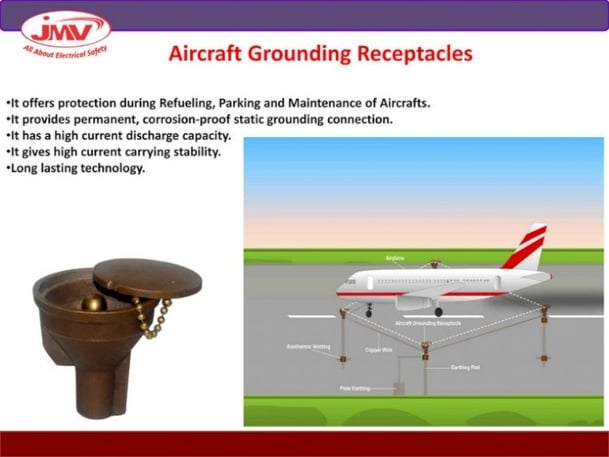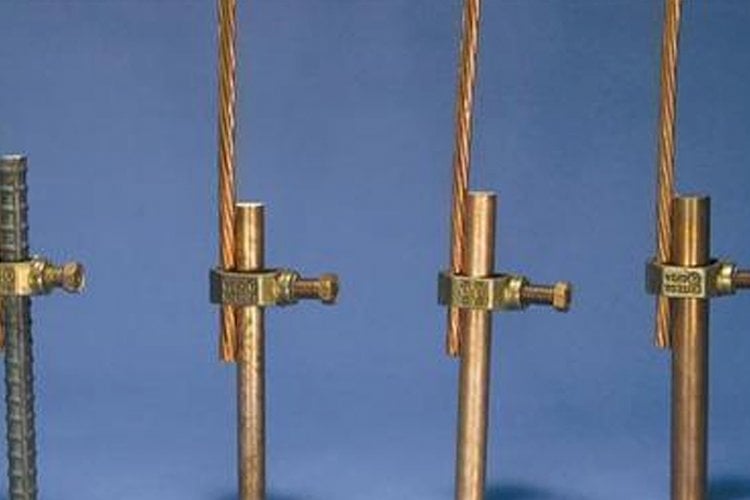Recently (May 4, 2021) a news article on grounding issues with the Boeing 737 MAX seemed to appear in most media outlets as a significant news story. Boeing did the right thing by suspending nearly a quarter of its fleet until they ensured that these aircraft are properly grounded. This news inspired various social media questions such as “Why does an airplane need grounding? It is up in the air, isn’t it? To what can it possibly be grounded?” Good questions – after all, it is not as if the airplane is dragging a copper wire behind it to directly bond it to the earth. So why would anyone care if there is a missing ground strap on a piece of internal equipment or not?
Background
First of all, it is important to understand that in NEC-Based countries like America, we have this single term, “Grounding.” In IEC-Based countries, such as the EU, we have a single term, “Earthing.” In both cases, they mean the same thing, and in both cases, they are used for electrical systems in both above-grade applications (i.e., above ground level) and below-grade applications. As you will see, some people use the term “bonding” to indicate above-grade connections within a structure.
For most structures and buildings, there are far more grounded and grounding conductors above-grade, than exist below-grade. Consider the typical home and the grounded conductors that are in your electrical system. Normally, both the green and the white wires are grounded, meaning that nearly two-thirds of every electrical wire in your home is part of your grounding system. Consider the wire conductors with the shield lines on your data cables and alarm systems, and you will start to get the picture of how significant and prevalent the above-grade grounding is in your home. And of course, you cannot forget that your metallic structural steel, water pipes, gas pipes, lightning protection systems, etc. are also part of your electrical grounding system!
For comparison, the below-grade portion of the typical home’s grounding system includes a ground rod or two, possibly a portion of a water pipe, and in many cases the steel rebar in the concrete slab. It has been often pointed out to electricians that have trained under the NEC, that the IEC did not require ground rods within residential sites until 2018! How is that possible? Because, in most cases, a connection to the earth is not required to safely operate an electrical system within a given structure. Let us consider that the primary purpose of our above-grade grounding system is to provide a low-impedance path for fault-currents to travel back (on a conductive metallic path) to the circuit breaker, thereby ensuring an automatic disconnection of the power should a fault occur. In contrast, the primary purpose of our below-grade grounding system is to ensure that the high-side of our source transformer (often owned by the utility company) will have an effective connection to earth for fault-currents to travel back (through the earth/soil) to the utility companies’ circuit breaker to ensure an automatic disconnection of the power should a fault occur. Now, there are certainly other important reasons for grounding both the above and below-grade systems to be sure. It is just that the primary purpose in a home or typical commercial property is to clear electrical faults by tripping the circuit breakers.

Measurements
Before we get back to our airplane, we also need to understand the differences between grounding and bonding and how we can measure and test these factors.
OSHA defines grounding and bonding as:
- Bond. The electrical interconnection of conductive parts designed to maintain a common electric potential.
- Ground. A conducting connection between an electric circuit or equipment and the earth, or to some conducting body that serves in place of the earth.
Source: https://www.osha.gov/laws-regs/regulations/standardnumber/1910/1910.269AppC
Typically, with bonding, we are looking to make sure that all of the metallic components within a structure are at the same potential. We can measure this using a standard resistance meter and measuring from point-to-point within the structure to make sure that the resistance between any two metallic objects within the structure is low (a common specification is less than 0.1 ohms). Because we are measuring a multi-path network and we truly cannot define the exact resistive path or circuit, we call this type of measurement “continuity."
Just a reminder, in grounding we often use three (3) different resistance measurement terminologies:
- Resistance: when you measure the voltage drop across a known circuit (but not with reference to a known mass or volume).
- Resistivity: when you measure the voltage drop across a known mass or volume.
- Continuity: when you measure the voltage drop across an unknown circuit, typically a multi-path network.
Typically, in grounding, we are looking to make sure that the connection to the earth/soil has a resistance measurement in reference to remote-earth that is within a given specification range. We call this type of measurement a “resistance-to-ground” test and there are numerous ways to measure it, although the details of these methodologies are not the subject for this Blog. Bottom line, grounding as far as OSHA is concerned is the intentional or unintentional connection of an electrical system to the earth/soil.
Now, it may seem that the NEC and OSHA are using different terminologies, and in some ways they are, but overall they are trying to say the same thing. In any case, it would be highly helpful if the Code writers of the NEC would straighten out some terminology and use different terms for our above-grade and below-grade normally-non-current-carrying-conductive parts.
Airplane Grounding and Bonding
Back to our airplane. Consider a 737 MAX (or any other aircraft for that matter) flying in the air and it is struck by lightning with 10,000-amps (coulombs). If we grab our ohm-meter and measure the airplane from tip-to-tip, wing-to-wing, and all points in-between, and let’s say we get an overall “continuity” of 1-ohm; what will the voltage be across the airplane?
Note: the lightning energy will only temporarily enter the plane. The plane does not have enough mass to absorb the full lightnng strike charge. Once the plane has been fully charged (within microseconds), the lightning energy will leave the plane and continue its journey to the earth.
If we apply Ohm’s Law, we find that the voltage drop across the airplane (the difference-in-potential) will be 10,000-volts! For most airplanes, 10,000-volts is far too much for its electronics to handle and it could cause damage to the airplane, which could lead to a crash. So how do we lower the resistance (“continuity” or difference-in-potential) of the airplane from tip-to-tip, wing-to-wing, and all points in-between? We add grounding conductors to lower the impedance and the difference in potential between everything within the plane! We make sure that every metallic object is properly bonded to the plane's grounding system and that our grounding system is extensive enough and effective enough to lower the overall resistance (“continuity” or difference-in-potential) across the airplane. So, once all this bonding is done, if we grab our trusty ohm-meter again and measure the airplane from tip-to-tip, wing-to-wing, and all points in-between, and let’s say we get an overall “continuity” of 0.001 ohms; what will the voltage be across the airplane? Again, if we apply Ohm’s Law, we get the following: 0.001 ohms x 10,000 volts = 10 volts. The added bonding (grounding) to the airplane lowered the difference-in-potential (i.e., continuity) so that the 10kA lightning strike will now only generate 10 volts across the airplane, thus protecting the plane from any likely damage.

Note: any single object within the plane that is NOT bonded to the grounding system, will represent a higher difference-in-potential, thus allowing hazardous high voltages to form across that object.
Hopefully, this explains why internal bonding within the airplane is so important. But what happens when the airplane has landed and is on the ground?
Let us take the same example above, except that this time the 737 MAX is parked on the ground. Consider if a 10,000-amp lightning strike hits our airplane; even if our 737 has been properly bonded and has a 0.001-ohm maximum difference in potential. A potential danger still exists because the plane is parked on the ground, and the lightning energy will arc-flash across the rubber wheels on its way to the earth, causing massive heat, and possibly fire. This is very bad and an outcome to avoid at all costs.
So how do we fix this? Easy, you bond the plane to the earth once it has landed! You may have noticed that the second a commercial airplane lands, a swarm of people run under the plane and start working. They connect air conditioning systems, power supplies (so the pilot can turn off the engines), and most importantly for our subject, they connect the plane to the airport’s below-grade grounding electrode system. This airfield grounding point not only eliminates the difference in potential between the airport and the plane, but it eliminates differences in potential with the fuel truck, and it allows lightning energy to travel safely to the grounding electrode system on a copper wire and not via a hazardous arc-flash.
Hopefully, this article will help you to understand the importance of the above-grade (or internal) bonding within an airplane, and the importance of the below-grade grounding of the airplane to a common electrode system once it has landed.
Closing Comments
While we at E&S Grounding Solutions try to write our articles to be as simple and easy to understand as possible; in reality, grounding and bonding can be very complex. Mind-boggling so at times for those who are not professionals or experts in this specific field.
We inspect a lot of facilities around the world and we find unbonded objects all the time, many of them highly important systems to human safety and/or corporate operations. However, rarely does a missing bonding strap make front-page news. But because it did, E&S decided to help answer some of these common questions that did arise with this Blog.
Grounding Systems are not only critical for human safety, but they are also critical for the proper operations of electronic and electrical systems. Any system can operate in fair weather when the sun is shining, birds are chirping, and the children are outside playing. BUT - when the storm hits and your clients need you the most, when times are at their worst and the need is more critical than ever, will your systems function as designed? Will your company be there to heroically save the day? Or will you be the next headline on the evening news?
Grounding Systems are normally-non-current-carrying and non-moving systems. Most grounding and earthing systems do not require a lot of maintenance. But they do need some level of inspection every 3 to 5 years and they do need to be reviewed by competent engineers when key systems are changed. If a serious incident should occur and someone is hurt, and the judge asks you when was the last inspection of your primary electrical safety system (i.e., the grounding system), and all you can do is hem and haw… your insurance premiums are bound to be skyrocketing soon.
If it has been quite a while since you have had a system-wide grounding audit by competent engineers that specialize in grounding systems, and who are not trying to sell you products but care about your assets and human safety, then even if not E&S, please consider finding competent professionals to help you soon.





